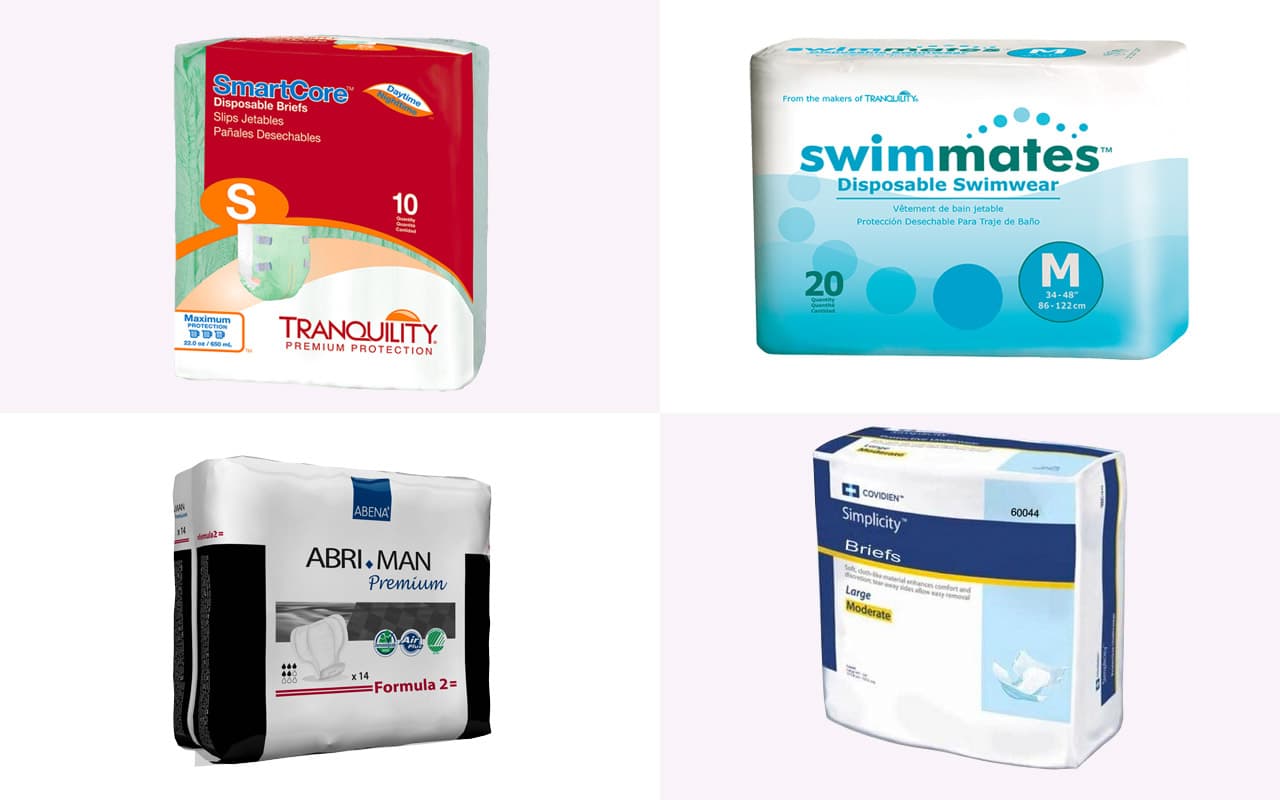Problems after prostate removal—including continence and sexual function—can have a big impact on your overall quality of life if they’re not managed as well as possible.
So, let’s consider:
a) Why incontinence after prostate surgery happens, and
b) How those experiencing incontinence post-surgery may be able to best tackle the issue
In this article we will cover:
Types of Incontinence Following Prostate Cancer
Urinary Incontinence
Bowel Incontinence
Approaches to Incontinence After Prostate Surgery
Pads for Male Incontinence After Prostate Surgery
Male Incontinence Underwear Is Another Option
Physical Therapy for Incontinence After Prostate Surgery
Lifestyle Changes to Consider After Prostate Removal
Male Incontinence After Prostate Surgery—Is It Guaranteed?
Good question! But no, incontinence after prostate surgery isn’t a given.
The prostate gland lies beneath the bladder and surrounds the urethra.
When removing the prostate, the surgeon will try to avoid impacting the surrounding area as much as possible.
Diagram of the Prostate Gland
Source: Medical News Today
Add this to the fact that radiation techniques have also become more fine-tuned over time. And implanting radioactive seeds can help with limiting the potential for prostate damage even further.
All of these factors combined means that urinary or bowel incontinence after a prostatectomy is far from guaranteed. In fact, only 6% to 8% of men have long-term problems after prostate removal.
Others may experience temporary issues, but these will typically disappear within three months to a year post-surgery.
The risk of incontinency depends on several factors, including:
Characteristics of the urethra
Age, weight, and general fitness
The size and position of the cancerous prostate
Treatments (e.g. different radiation options, surgery, or a combination of the two)
That said, sometimes the tissue damage is unavoidable.
Types of Incontinence Following Prostate Cancer
One may experience urinary or bowel incontinence after prostate surgery. Let’s briefly discuss the differences between these two types.
Urinary Incontinence
When removing the prostate, the surgery process may disturb the muscles that are in control of the urethra. There are three muscles that, if tampered with, can lead to urinary incontinence. One muscle sits at the bladder’s neck and one in the prostate itself. The third is external and sits below the prostate near the pelvic floor. More significant forms of surgery can sometimes only leave the external muscle intact.
Leading causes of urinary incontinence include:
Depending on the cause, it can lead to various types of urinary incontinence.
For example, you may find yourself having to manage any of (or a combination of) the following:
Overflow incontinence. Sometimes caused by a blockage in the urethra or uncontrollable bladder contractions
Stress incontinence. Caused by stress or pressure on the bladder. It will cause leaking when you cough, sneeze, or lift something heavy
Urge incontinence. When you suddenly need to urinate and may not make it to the bathroom in time.
Bowel Incontinence
Bowel incontinence is exactly what you’d think it is: a loss of bowel movement control. But luckily, bowel incontinence after prostatectomy is very rare (less than 1% of cases). The downside is that—unlike urinary incontinence—it doesn’t usually improve with time.
This is because bowel incontinence often results from damage to the rectum during the treatment process.
One of the most common causes is the use of external beam radiotherapy after extensive treatment because it tends to blanket a wide area.
Approaches to Incontinence After Prostate Surgery
Several non-invasive approaches exist to treat both mild and moderate leakage.
Ultimately, the final solution can often come about through using a combination of solutions.
Rest assured, though, a dignified and enjoyable life after prostate cancer is definitely achievable.
Here are some of the most common approaches people choose from
Pads for Male Incontinence After Prostate Surgery
In most circumstances, you’ll be given absorbent pads for use immediately after prostate surgery. If the incontinence continues, you may need to continue using them for an extended period.
When deciding on the right men’s pads for you following surgery, it’s sensible to take the following into account:
TENA Men Maximum Guard Incontinence Pad
Top Tip: The thicker the guard or pad, the less discrete (and, in some cases, less comfortable) they may be. Choose a Super or Maxi size only if necessary.
How active you are. For active patients, a shaped pad that is anatomically designed will be more comfortable and less likely to leak. Sedentary patients may be served better with a slip.
Skin sensitivity. If you have sensitive skin, choose a brand that has a breathable design. Also, avoid pads that contain latex, which can cause sensitivity.
Top Tip: Look for latex-free and hypoallergenic labels on products. These are less likely to cause skin irritation.
Prevail Male Guards, Maximum
Top Tip: Pads come in a range of prices, but whatever your choice, buying in bulk will save you in the long run. Several online shops specialize in incontinence products. Home delivery is a discreet and practical purchase option
Male Incontinence Underwear Is Another Option
Diapers are another option. Unisex and male incontinence underwear come in a wide range of materials and sizes. They tend to be more discreet, comfortable, and less clunky to put on and take off when compared to pads or liners.
Prevail Pull-Up Underwear (Maximum But Discreet)
Physical Therapy for Incontinence After Prostate Surgery
To start, let’s put an end to a big health myth—kegel exercises are not just for women!
The truth is, regular Kegel exercises that strengthen the pelvic floor muscles can help men reduce their control incontinence issues, too.
To practice kegel exercises, follow these simple steps:
Identify the pelvic floor muscles by re-enacting what you’d do if you tried to stop urinating mid-stream. It should feel like a gentle contraction between the legs. The testicles will rise slightly and the anus should contract. There shouldn’t be any pain.
Tighten the muscles and hold for three seconds. Relax for three seconds, and try again. Aim for ten repetitions and breathe freely throughout.
Avoid flexing your muscles in the abdomen, thighs, or buttocks.
Repeat three times a day in any position—seated, lying down, or standing.
Walking is also known to strengthen the pelvic floor.
However, please avoid exercises that put any significant pressure on the bladder or urethra, e.g. sit-ups and weight lifting.
Lifestyle Changes to Consider After Prostate Removal
You may know about a few of these lifestyle recommendations already, but it can still be good to remind yourself. After all, life has a habit of getting hectic sometimes!
Here are a few lifestyle factors to try to adhere to day-to-day:
Don’t drink too many fluids, especially in the hours before you plan to go to bed.
Avoid or limit caffeine, alcohol, and spicy foods.
Urinate regularly to keep the bladder empty and decrease the likelihood of leaks.
Maintaining a healthy weight may help to reduce the pressure on the bladder and urethra.
Medication can be prescribed to help decrease the need for frequent urination. Also, make sure to review your prescriptions with your doctor, just in case any medications may be irritating the bladder.
Of course, incontinence after prostate surgery can be a nuisance and a little embarrassing. But the upside is, there are a number of ways to adapt and make sure it doesn’t detract from your quality of life.
Easy-wear incontinence pads, physical therapy, and pull-up underwear all represent potential solutions for this sensitive health issue.
If you ever need help choosing the best pads or underwear for your needs, don’t hesitate to get in touch.
You can call the Carewell support team at (800) 696 2273.
Or, if sending an email is easier for you, please contact us at support@carewell.com.



